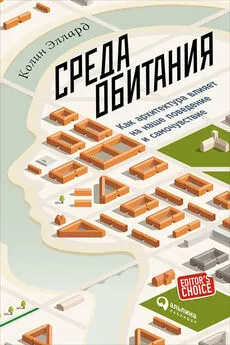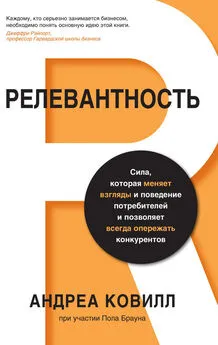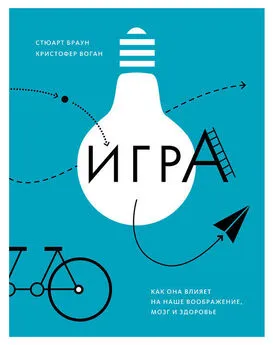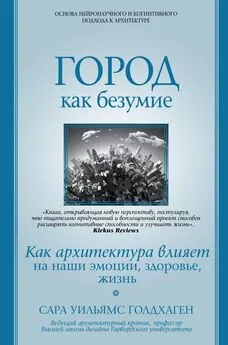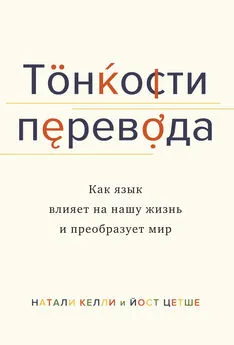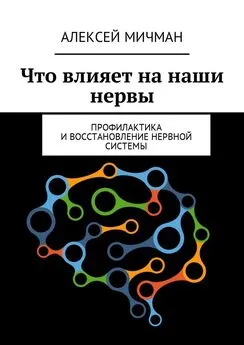Мэтью Джексон - Человеческие сети [Как социальное положение влияет на наши возможности, взгляды и поведение]
- Название:Человеческие сети [Как социальное положение влияет на наши возможности, взгляды и поведение]
- Автор:
- Жанр:
- Издательство:АСТ: CORPUS
- Год:2021
- Город:Москва
- ISBN:978-5-17-117364-7
- Рейтинг:
- Избранное:Добавить в избранное
-
Отзывы:
-
Ваша оценка:
Мэтью Джексон - Человеческие сети [Как социальное положение влияет на наши возможности, взгляды и поведение] краткое содержание
В формате PDF A4 сохранен издательский макет книги.
Человеческие сети [Как социальное положение влияет на наши возможности, взгляды и поведение] - читать онлайн бесплатно ознакомительный отрывок
Интервал:
Закладка:
Breza E., Chandrasekhar A. G. Social Networks, Reputation and Commitment: Evidence from a Savings Monitors Experiment . (2016) National Bureau of Economic ResearchWorking Paper № 21169.
Britton J., Dearden L., Shephard N., Vignoles A. How English Domiciled Graduate Earnings Vary with Gender, Institution Attended, Subject and Socio-Economic Background . Technical Report, Institute for Fiscal Studies, 2016.
Broido A. D., Clauset A. Scale-Free Networks Are Rare . 2018. arXiv preprint arXiv: 1801.03400.
Brown M., Setren E., Topa G. Do Informal Referrals Lead to Better Matches? Evidence from a Firm’s Employee Referral System . FRB of New York Staff Report, 2012.
Brummitt Ch. D., Barnett G., D’Souza R. M. Coupled Catastrophes: Sudden Shifts Cascade and Hop Among Interdependent Systems // Journal of the Royal Society Interface. 2015. Vol. 12. № 112, doi 10.1098/rsif.2015.0712.
Buchanan J. M., Stubblebine W. C. Externality // Economica. 1962. Vol. 29. № 116. P. 371–384.
Bullock J. G., Gerber A. S., Hill S. J., Huber G. A. Partisan Bias in Factual Beliefs about Politics // Quarterly Journal of Political Science. 2015. Vol. 10. P. 519–578.
Bursztyn L., Ederer F., Ferman B., Yuchtman N. Understanding Mechanisms Underlying Peer Effects: Evidence from a Field Experiment on Financial Decisions // Econometrica. 2014. Vol. 82. P. 1273–1301.
Burt R. S. Structural Holes: The Social Structure of Competition . Cambridge, Mass.: Harvard University Press, 1992.
Burt R. S. The Network Structure of Social Capital // Research in Organizational Behavior. 2000. Vol. 22. P. 345–423.
Burt R. S. Brokerage and Closure: An Introduction to Social Capital . Oxford, U. K.: Oxford University Press, 2005.
Cabrales A., Gale D., Gottardi P. Financial Contagion in Networks // The Oxford Handbook of the Economics of Networks / Eds. Bramoullé Y., Galeotti A., Rogers B. Oxford, U. K.: Oxford University Press, 2016.
Cai J., De Janvry A., Sadoulet E. Social Networks and the Decision to Insure // American Economic Journal: Applied Economics. 2015. Vol. 7. № 2. P. 81–108.
Cai J., Szeidl A. Interfirm Relationships and Business Performance // The Quarterly Journal of Economics. 2018. Advance access: doi:10.1093/qje/qjx049.
Calvó-Armengol A., Jackson M. O. The Effects of Social Networks on Employment and Inequality // The American Economic Review. 2004. Vol. 94. P. 426–454.
Calvó-Armengol A., Jackson M. O. Networks in Labor Markets: Wage and Employment Dynamics and Inequality // Journal of Economic Theory. 2007. Vol. 132. P. 27–46.
Calvó-Armengol A., Jackson M. O. Like Father, Like Son: Labor Market Networks and Social Mobility // American Economic Journal: Microeconomics. 2009. Vol. 1. № 1. P. 124–150.
Carayol N., Jackson M. O. Evaluating the Underlying Qualities of Items and Raters from a Series of Reviews . Mimeo, Stanford University, 2017.
Card D., Giuliano L. Can Tracking Raise the Test Scores of High-Ability Minority Students? // The American Economic Review. 2016. Vol. 106. P. 2783–2816.
Card D., Mas A., Rothstein J. Tipping and the Dynamics of Segregation // The Quarterly Journal of Economics. 2008. Vol. 123. № 1. P. 177–218.
Carneiro P., Heckman J. J. The Evidence on Credit Constraints in Post-Secondary Schooling // The Economic Journal. 2002. Vol. 112. P. 705–734.
Carrell S., Sacerdote B. Why Do College-Going Interventions Work? // American Economic Journal: Applied Economics. 2017. Vol. 9. № 3. P. 124–151.
Carrell S., Sacerdote B. I., West J. E. From Natural Variation to Optimal Policy? The Importance of Endogenous Peer Group Formation // Econometrica. 2013. Vol. 81. P. 855–882.
Carrillo-Santisteve P., Lopalco P. L. Measles Still Spreads in Europe: Who Is Responsible for the Failure to Vaccinate? // Clinical Microbiology and Infection. 2012. Vol. 18. P. 50–56.
Carrington W. J., Detragiache E., Vishwanath T. Migration with Endogenous Moving Costs // The American Economic Review.1996. Vol. 86. P. 909–930.
Carter M. R., Barrett Ch. B. The Economics of Poverty Traps and Persistent Poverty: An Asset-Based Approach // The Journal of Development Studies. 2006. Vol. 42. P. 178–199.
Carvalho V. M. From Micro to Macro Via Production Networks // Journal of Economic Perspectives. 2014. Vol. 28. № 4. P. 23–48.
Caulier J.-F., Mauleon A., Vannetelbosch V. Contractually Stable Networks // International Journal of Game Theory. 2013. Vol. 42. № 2. P. 483–499.
Centola D. An Experimental Study of Homophily in the Adoption of Health Behavior // Science. 2011. Vol. 334. № 6060. P. 1269–1272.
Centola D., Eguíluz V. M., Macy M. W. Cascade Dynamics of Complex Propagation // Physica A: Statistical Mechanics and Its Applications. 2007. Vol. 374. P. 449–456.
Cépon B., Devoto F., Duflo E., Parienté W. Estimating the Impact of Microcredit on Those Who Take It Up: Evidence from a Randomized Experiment in Morocco // American Economic Journal: Applied Economics. 2015. Vol. 7. P. 123–150.
Cesaretti R., Lobo J., Bettencourt L. M., Ortman S. G., Smith M. E. Population-Area Relationship for Medieval European Cities // PLoS ONE. 2016. Vol. 11. № 10. Article № e0162678.
Chandrasekhar A., Jackson M. O. Tractable and Consistent Random Graph Models . 2013. Доступно: http://ssrn.com/abstract=2150428.
Chandrasekhar A., Jackson M. O. A Network Formation Model Based on Subgraphs . 2016. Доступно: https://ssrn.com/abstract=2660381.
Chandrasekhar A., Larreguy H., Xandri J. P. Testing Models of Social Learning on Networks: Evidence from a Lab Experiment in the Field . (2015) National Bureau of Economic ResearchPaper № 21468.
Chaney Th. The Network Structure of International Trade // The American Economic Review. 2014. Vol. 104. P. 3600–3634.
Chen W., Liu Z., Sun X., Wang Y. A Game-Theoretic Framework to Identify Overlapping Communities in Social Networks // Data Mining and Knowledge Discovery. 2010. Vol. 21. P. 224–240.
Chen Y., Li S. X. Group Identity and Social Preferences // The American Economic Review. 2009. Vol. 99. P. 431–457.
Chetty R., Friedman J. N., Saez E., Turner N., Yagan D. Mobility Report Cards: The Role of Colleges in Intergenerational Mobility . (2017) National Bureau of Economic Research Working Paper № 23618.
Chetty R., Grusky D., Hell M., Hendren N., Manduca R., Narang J. The Fading American Dream: Trends in Absolute Income Mobility Since 1940 // Science. 2017. Vol. 356. № 6336. P. 398–406.
Chetty R., Hendren N. The Impacts of Neighborhoods on Intergenerational Mobility: Childhood Exposure Effects and County-Level Estimates . (2015) Harvard University and National Bureau of Economic Research Working Paper № 23001.
Chetty R., Hendren N., Katz L. F. The Effects of Exposure to Better Neighborhoods on Children: New Evidence from the Moving to Opportunity Experiment // The American Economic Review. 2016. Vol. 106. P. 855–902.
Chiappori P.-A., Salanié B., Weiss Y. Partner Choice, Investment in Children, and the Marital College Premium // The American Economic Review. 2017. Vol. 107. № 8. P. 2109–2167.
Choi S., Gale D., Kariv S. Behavioral Aspects of Learning in Social Networks: An Experimental Study // Advances in Applied Microeconomics: A Research Annual. 2005. Vol. 13. P. 25–61.
Christakis N. A., Fowler J. H. Connected: The Surprising Power of Our Social Networks and How They Shape Our Lives . N. Y.: Little, Brown, 2009.
Christakis N. A., Fowler J. H. Social Network Sensors for Early Detection of Contagious Outbreaks // PLoS ONE. 2010. Vol. 5. № 9. Paper № e12948.
Christakis N. A., Fowler J. H. Friendship and Natural Selection // Proceedings of the National Academy of Sciences. 2014. Vol. 111. P. 10796–10801.
Clampet-Lundquist S., Massey D. S. Neighborhood Effects on Economic Self-Sufficiency: A Reconsideration of the Moving to Opportunity Experiment // American Journal of Sociology. 2008. Vol. 114. P. 107–143.
Clauset A. Trends and Fluctuations in the Severity of Interstate Wars // Science Advances. 2018. Vol. 4. № 2. Article № eaao3580.
Clauset A., Newman M. E. J., Moore C. Finding Community Structure in Very Large Networks // Physical Review E. 2004. Vol. 70. Article № 066111.
Clauset A., Shalizi C. R., Newman M. E. J. Power-Law Distributions in Empirical Data // SIAM Review. 2009. Vol. 51. P. 661–703.
Clifford P., Sudbury A. A Model for Spatial Conflict // Biometrika. 1973. Vol. 60. P. 581–588.
Coase R. H. The Problem of Social Cost // Journal of Law and Economics. 1960. Vol. 3. P. 1–44.
Coffman L. C., Featherstone C. R., Kessler J. B. Can Social Information Affect What Job You Choose and Keep? // American Economic Journal: Applied Economics. 2016. Vol. 9. № 1. P. 96–117.
Coleman J. S. The Adolescent Society . N. Y.: Free Press, 1961.
Coleman J. S. Social Capital in the Creation of Human Capital // American Journal of Sociology. 1988. Vol. 94. P. S95–S120.
Coleman J. S., Hoffer Th. Public and Private High Schools: The Impact of Communities . N. Y.: Basic Books, 1987.
Coman A., Momennejad I., Drach R. D., Geana A. Mnemonic Convergence in Social Networks: The Emergent Properties of Cognition at a Collective Level // Proceedings of the National Academy of Sciences. 2016. Vol. 113. № 29. P. 8171–8176.
Conley T. G., Udry Ch. R. Learning About a New Technology: Pineapple in Ghana // The American Economic Review. 2010. Vol. 100. P. 35–69.
Copic J., Jackson M. O., Kirman A. Identifying Community StructuresfromNetworkData via Maximum Likelihood Methods // The BE Journal of Theoretical Economics. 2009. Vol. 9. № 1. Article № 1935–1704.
Corak M. Inequality from Generation to Generation: The United States in Comparison . (2016) IZA Discussion Paper № 9929.
Cowling B. J., Lau L. L. H., Wu P., Wong H. W. C., Fang V. J., Riley S., Nishiura H. Entry Screening to Delay Local Transmission of 2009 Pandemic Influenza A (H1N1) // BMC Infectious Diseases. 2010. Vol. 10. P. 1–4.
Cunha F. Gaps in Early Investments in Children . Preprint, Rice University, 2016.
Cunha F., Heckman J. J., Lochner L., Masterov D. V. Interpreting the Evidence on Life Cycle Skill Formation // Handbook of the Economics of Education. 2006. Vol. 1. P. 697–812.
Currarini S., Jackson M. O., Pin P. An Economic Model of Friendship: Homophily, Minorities, and Segregation // Econometrica. 2009. Vol. 77. P. 1003–1045.
Currarini S., Jackson M. O., Pin P. Identifying the Roles of Race-Based Choice and Chance in High School Friendship Network Formation // Proceedings of the National Academy of Sciences. 2010. Vol. 107. P. 4857–4861.
Currarini S., Morelli M. Network Formation with Sequential Demands // Review of Economic Design. 2000. Vol. 5. P. 229–250.
Currie J. Early Childhood Education Programs // Journal of Economic Perspectives. 2001. Vol. 15. № 2. P. 213–238.
Cushing F. H. Zuñi: Selected Writings of Frank Hamilton Cushing / Ed., with an introduction by J. Green. Lincoln: University of Nebraska Press, 1981.
Cutler D. M., Glaeser E. L Social Interactions and Smoking // Research Findings in the Economics of Aging. 2010. P. 123–141.
Читать дальшеИнтервал:
Закладка:
![Обложка книги Мэтью Джексон - Человеческие сети [Как социальное положение влияет на наши возможности, взгляды и поведение]](/books/1061636/metyu-dzhekson-chelovecheskie-seti-kak-socialnoe-po.webp)

